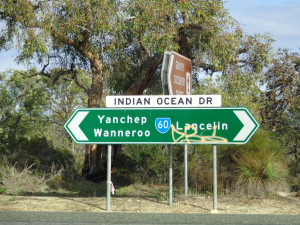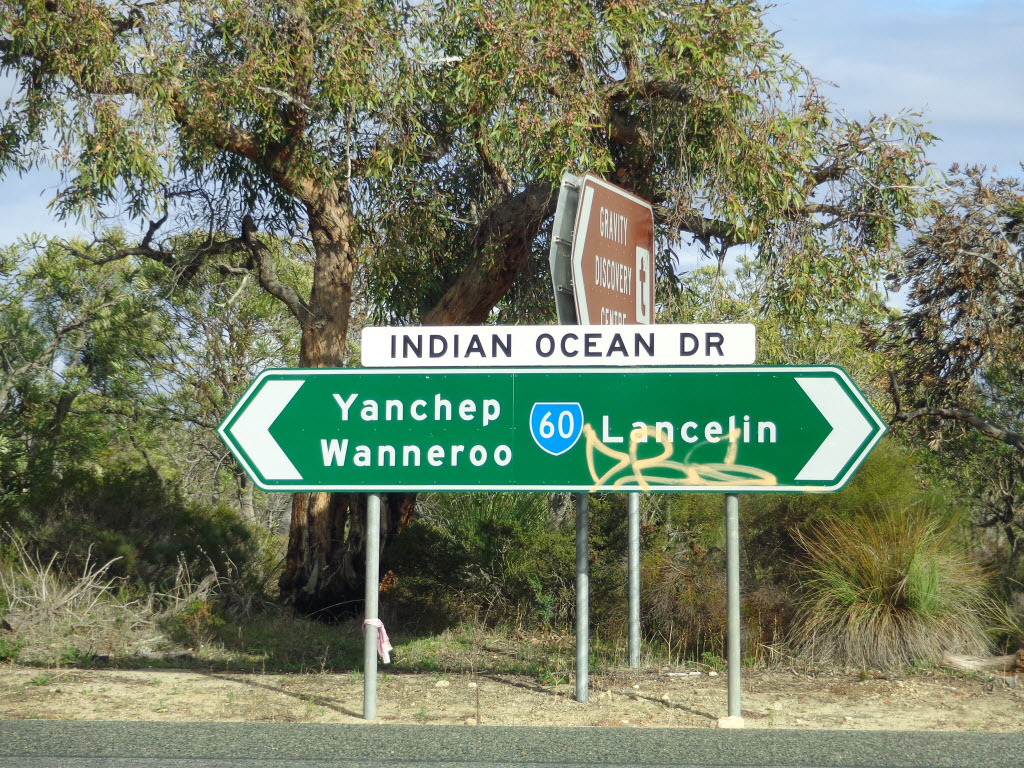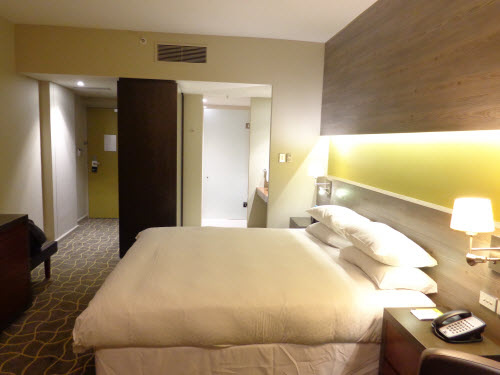I had thought deserts were supposed to be dry and boring, yet I was driving through what can be described as tropical down pour as I headed up north from Perth on the Indian Ocean Drive toward the town of Cervantes, peering through thick drops of rain and maniacally overtaking road trains to get ahead.
Thankfully, the the pockets of rain eased 30 mins into the drive and the sun was quick to dry up the land. As the looming clouds disappeared into the horizon, the blue azure of the Indian Ocean opened up in the most glorious display and on my right, the landscape flicked between mobile sand dunes tall and white, and the arid dry earth alive with prickly grass trees, otherwise known scientifically as Xanthorrhoea, and shrubs as tough as nails that would bloom the most beautiful wild flowers during September (unfortunately, not now).

On the road
The road was smooth and straight, being only two years old and still without the patches of repairs and bumps. With better visibility after the rain and the smell of the salty sea breeze and dampened earth, I shifted the gear to fifth and sped through this stretch of road train free road.
Road trains. One of those annoyances one can experience with driving in outback Australia, and is common throughout roads in Western Australia. These giant multi-trailered beasts are an important part of the natural resources supply chain industry that can be bullies to the general traffic. Thankfully, the Indian Ocean Drive does not allow for road train travel, which made my trip just that extra bit smoother.

It was very much a puppy dog moment, as I cruised along with wind in my hair and my ears (and tongue, if I had stuck it out) flapping in the air. Rays of sunshine were hitting the landscape and created halo-like glow that traced boulders and hills.
The alien land of the Pinnacles
The town of Cervantes is the closest town to The Pinnacles, and it was in a sleepy state when we arrived. It took us a mere two and a bit hours for the 245km trip instead of the recommended 3.5 hours, and we were delighted. The new road must have done the towns dotted along the way wonders.

The Pinnacles is as weird and alien as you see from travel brochures. These limestone formations have been formed over many years, and scientists have proof that this part of Australia was under water sometime which created such surreal landscape.
You almost imagine yourself playing hide and seek on Gallifrey!
The effect of modern traffic development
We settled for a meal at the local tavern and Chris, the friendly owner filled us in on the impact of the Indian Ocean Drive.
“It’s now so easy for people to just come up on a day trip without having to spend the night here any more”, despite his bubbly personality, Chris commented with a sigh, “so business is no longer as good these days”.
It was a different story for the petrol station owner however, who was delighted with the increase of traffic (and cars requiring fill up) due to the completion of Indian Ocean Drive.
Obviously, any changes to infrastructure will benefit some and inconvenience some. For me, I was glad that I didn’t have to battle the road trains on the old route through the in-land Brand Highway and was able to enjoy a pleasant journey even in the rain.
Coming back for the wildflowers
I’d very much like to return for the same drive during Western Australia’s wildflower season, where it is said the entire landscape would be carpeted purple, blue, yellow and pink.
However a quick trip through the desert in the rain and sand boarding down one of the mobile sand dunes has been enough, for now.



 Come fly with me
Come fly with me
Share your thoughts below!